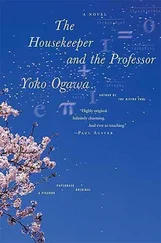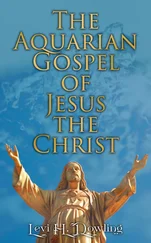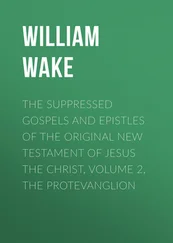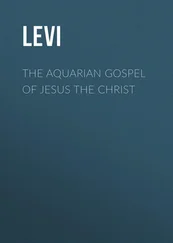v. 8:He is defined with the help of a correction 27(“not … but”) in the sense of an understatement like in verses 20–21, 27 as being “not … the light but to testify ” as His witness “ about the light ” (cf. 5:35) – Christ Jesus.
+ “To be or not to be” in the “pre-existent”, incarnate Jesus, “the True Light” (vv. 9–13)
v. 9:The incarnate Jesus is described in the metaphoric words as “ the ( true 28) light ( )” (cf. 1 John 2:8 and Isaiah 49:6) for the people as their ray/flicker of hope who illuminates the “ darkness ” (cf. v. 5a, b) “ in the world ”. He is like the “ shining ” 29(cf. Matthew 4:16) of the life-giving sun “ into the world ” (cf. John 3:19; 6:14; 10:36; 11:27; 12:46–47; 16:28; 17:18; 18:37 or 8:12; 9:5; 11:9; Matthew 5:14) respectively
v. 10:“ in the world ” (vv. 9c, 10a, b, c, 29c) – note here the concatenation (in Latin “ concatenatio ” 30) in verses 9c–10a as in verses 1–2. In the same words in verse 3a – “expressis verbis”: “… (made) through Him ( )” – are used in verse 10b. So, the author emphasizes that Jesus (of Nazareth), the divine “ only Son ” (vv. 14d, 18b) of God, was involved in the creation of the world by God, the Creator of all things in Heaven and on earth. However, the so-called “ world ” did “ not know ” (in Greek “ g ɩ nósko ” 31) respectively ignored/ignores Jesus (cf., for example, John 14:17; 16:3 or 1 Corinthians 2:8; 1 John 3:1).
v. 11:In verses 11–12 two groups are described in view of an “either-or- decision ” 32: On the one side the group which did not accept Jesus as the “ only Son ” of God (cf. v. 11) and on the other side the group of the believers in Him (cf. vv. 12–13). Either someone trusts in Jesus (cf. vv. 12–13, 16–18 and 20:30–31) or s/he turns against Him by not believing in Him (as the refusal of Him – cf. vv. 10c–11b).
The antithetic parallelism with the noun “ tà ídɩ a ” in verse 11a and the term “ídɩ os ” in verse 11b – note the same root of word – underlines the “controversy”/“conflict” between Jesus and the “Chosen People” (cf. Matthew 21:38) from the beginning:
“( He came ) in / to His / own ( ),
and / His / own / people did / [ ] not receive 33/ accept [ Him ]” like a stranger (cf., for example, John 3:11, 32; 5:43).
v. 12:However, everyone who “ received ”/receives “ Him ” and “ believed ”/believes “ in ( His ) name ( )” (20:31 and 3:18; 5:43; 10:25; 12:13; 14:13–14, 26; 15:16, 21; 16:23–24, 26) will be called “ children of God ” (cf. John 11:52; Romans 8:16, 21; 9:8; Philippians 2:15; 1 John 3:1–2, 10; 5:2, 13 and Matthew 5:45; Galatians 3:26; Ephesians 1:5)
v. 13:because everyone is God’s creature (v. 13d: “ ek theo ũ egennéthesan ” – “ from God / were / born ” – cf. John 3:3, 5–6; James 1:18; 1 Peter 1:23). Note the contrast between the heavenly God and the human beings on earth with the help of a correction 34(ouk … oudé … oudé … allá): “neither of ” blue-“ blooded ” human beings “nor of / the / will / of the / flesh nor of / the / will / of / man ” (= human reflections/ideas/plans, desires …), “but of God …”
- Strophe 3: The Incarnated Jesus in the World (vv. 14–18)
“A divine being (God’s Word [1:1,14], who is also the light [1:5,9] and God’s only Son [1:14,18] comes into the world and becomes flesh.” 35“The Word” (vv. 1a, b, c, 14a) “was made flesh and lived among us”, so the “Angelus” prayer. The phrase “ became flesh ” is an expression of Jesus’ incarnation – the meaning of the Latin word is to “be(come) in flesh” – as the divine God’s Son on earth. Christ is the eschatological, authentic Revealer of “ truth ” 36(in Greek “ aléthe ɩ a ” in vv. 14e, 17b) and Saviour sent from God who was/is born through Mary as a human being like us – the Christmas storyof Jesus of Nazareth is the hi storyof the incarnate “Son of God” who was/is one of us in “ flesh ” 37(vv. 13a, 14a) and blood. He “ dwelt among us ” (v. 14b) in the midst of human beings and in solidarity with us in allusion to the Jewish nomads who lived in tents (cf., for example, Exodus 29:45; Leviticus 26:11–12; Numbers 35:34; Ezekiel 37:27). He was a human being under human beings 38. In Jesus, God is present in the world and He links the divine world with the earthly world 39. The so-called doctrine of the “Hypostatic Union” at the Council of Chalcedon in 451 40refers in allusion to John 1:1, 14 that the one person Jesus Christ had/has two distinct natures: Jesus of Nazareth was a humanbeing, a man (100 per cent – cf. Romans 1:3; 8:3; 9:5; Philippians 2:7; Colossians 1:22; 1 Timothy 3:16; 1 John 4:2; 2 John 7) and He is the Christ, the divine“Son of God” (100 per cent – cf. Romans 1:4; 8:3; 9:5; Philippians 2:6; 1 John 4:2).
For someone who did/does not believe in Jesus of Nazareth, He was only a human being (“ sárx ” = flesh) on earth 41, but for His disciples (cf. v. 14c), John the Baptist (cf. v. 15) and for His believers in Him (cf. 16) 42– then and nowadays –He was/is the “ the only ” Son (cf. Genesis 22:2) “ from the FATHER ” (vv. 14d, 18b). So, the Fourth Evangelist suggests that he as Jesus’ disciples together with the others “ have seen ” (in Greek “ theáoma ɩ ” 43– cf., for example, John 20:18; Acts 9:27; 1 Corinthians 9:1) “( His ) glory ( )” 44(cf. Exodus 33:18; 2 Peter 1:17) and were His witnesses (cf., for example, 2 Peter 1:16; 1 John 1:1; 4:14).
+ The Witness of John the Baptist for Jesus (v. 15)
John the Baptist (cf. vv. 6–8) is also a witness of Jesus – note the verb “ marturéo ” (= to testify) in verses 7b, 8b, 15a, 32a, 34a. The pre-existence of Jesus 45in contrast to him is described with the help of an antithetic parallelism:
Jesus “ comes ” temporally “ after ” him (vv. 15d, 27a, 30b and Mark 1:7; Matthew 3:11),
but He ranks “ before ” him,
because “[ He was ] / the / first ... [ ]” divine One.
+ The Relationship to Jesus by His Believers (vv. 16–18)
v. 16:We agree with Michael Theobald to define the phrase “ we all ” (in Greek “ pántes ” in vv. 7c, 16b) with the “ grace ful” believers (cf. Ephesians 3:19) in Jesus as the Christ and “ the only ” Son of God – then and nowadays as readers/hearers in the sense of the “ receivers ” (vv. 12a, 16a 2) of the Good News according to the Fourth Gospel 46.
v. 17:We also agree with Theobald that the parallelism of verse 17a – “through Moses ” – and verse 17b – “through Jesus Christ ” (cf. John 17:3; 20:31 47) is not to be understood as an “antithesis” 48(“aut – aut” – either-or) of “ Law ” 49/“ Torah ” (vv. 17a, 45c) – the first part of the Hebrew Bible, the so-called “ Ta Na K”: the Torah, the prophets ( nebiim), the writings ( ketubim) – versus “ grace and truth ” 50(cf. Exodus 34:6; Psalm 25:10; 40:11; 85:11 [LXX]; Romans 5:21), but rather it is to be read in the positive sense of “et – et” (cf. Matthew 5:17–18; 7:12) that means both – “ Law ”/“ Torah ” & “ grace and truth ” – complement one another.
Читать дальше












